2017 Suzuki RM-Z250 Review

By Todd Jarratt – Images by Toby Stocks
Much like the Suzuki RM-Z450, the little brother RM-Z250 features mainly cosmetic updates for the 2017 season. This comes without surprise as manufacturers typically make a host of changes to their big bore 450 and then implement similar adjustments to their 250 the following year.
However, with less international race team involvement for the RM-Z250 over the last few seasons it hasn’t been quite as well recognised as a championship winning machine as much as it’s open class sibling.
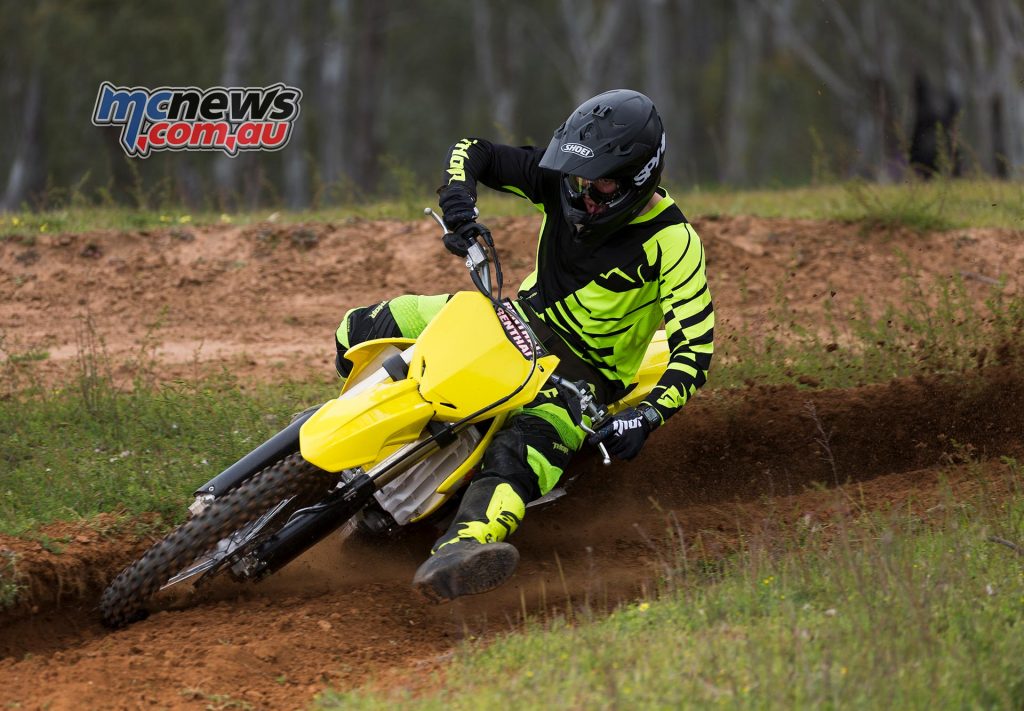
Suzuki may be looking to change this in 2017 though with recent announcements stating Phil Nicolett and Matt Bisceglia will compete on the RM-Z250 in the AMA series.
While Australia’s own Hunter Lawrence, and Bas Vaessen and Jeremy Seewer will be representing the yellow empire in the MXGP series MX2 category.
Australia’s own MX2 involvement has yet to be announced, but hopefully we will see more yellow splashed through the MX Nationals MX2 field in 2017 to go along with the increased support being shown around the globe.
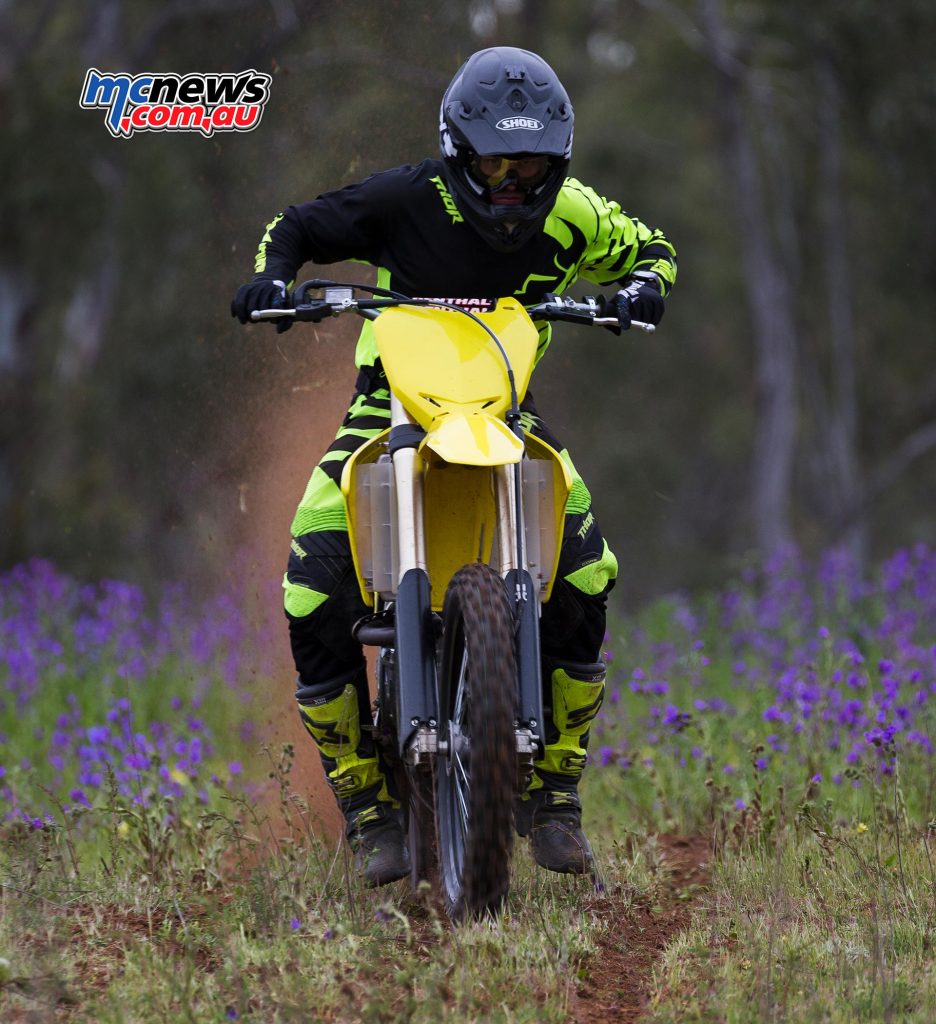
Those looking to throw a leg over the Suzuki RM-Z250 will notice its fresh aesthetics for 2017, with the introduction of black anodised Excel rims, black fork clamps, black side plates, yellow rear fender and a yellow top seat cover, reflecting those changes also made to the 2017 RM-Z450.
Although these changes remain mostly superficial, the bold update for the new season gives the bike a whole new lease on life with a completely different look to anything provided standard by Suzuki previously and as a result may entice new customers.
But we need to delve beyond more than just what the bike looks like and instead discuss how I feel the new model performs.
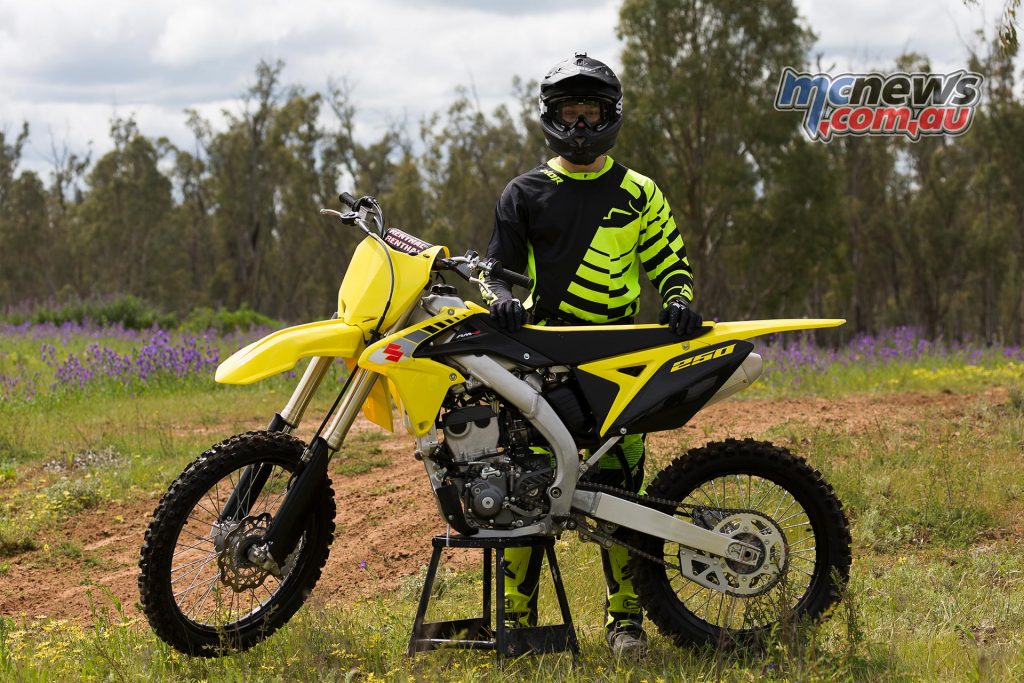
2017 Suzuki RM-Z250 Chassis
For 2017, Suzuki maintains their use of the aluminium twin spar frame and 6.5L fuel tank which was a must all along, as the frame feels very slim and as a result allows great lower body control over the motorcycle.
The slender frame was one of the first things I noticed when getting on the RM-Z, as I was able to firmly grip the tank shrouds without the bike feeling wide, which has been a previous downfall of numerous other manufacturers.
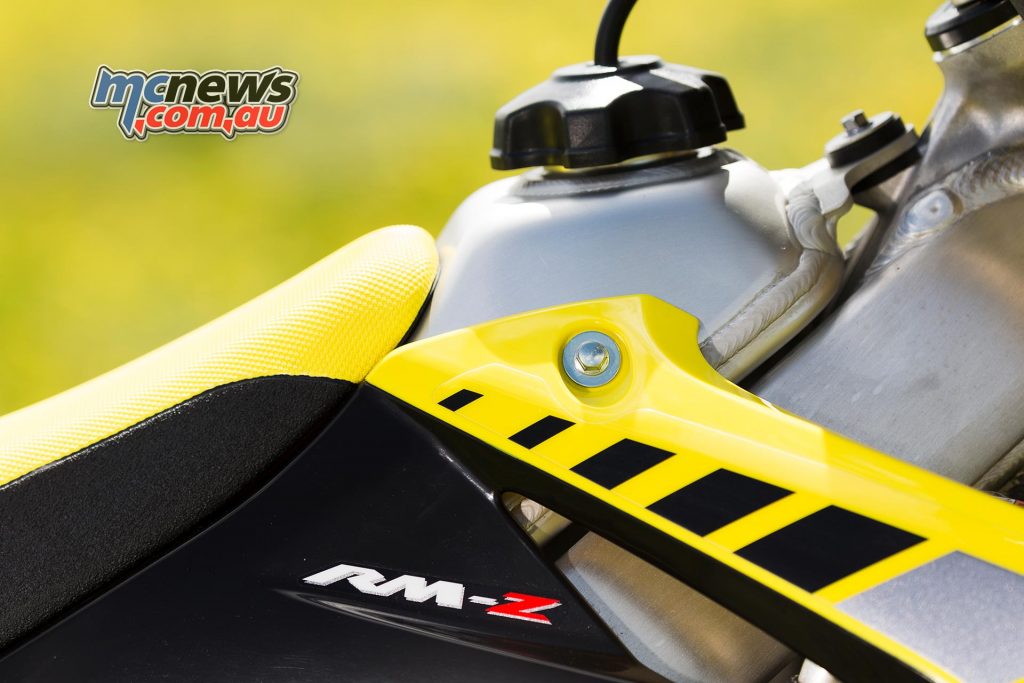
A slim frame and tank area in my opinion is vital, as it can automatically alter a rider’s position whether they’re seated or standing.
I also feel that a good frame width must be paired with a neutral seat, tank and bar combination as there is nothing worse than getting on a bike that rides too high or low in either the front or rear end, as this unsettles the loading pattern and usually makes for an uncomfortable ride.
Fortunately for Suzuki though, they have matched the slim frame with a neutral seated feel, which puts the bike in my good books.

I felt immediately at home once I adjusted the Renthal aluminium Fatbar and lever positions, which is testament to Suzuki’s long-term development of their current model bikes.
As a rider or racer, I don’t think any major changes need to be made to the chassis or cockpit in setting up the 2017 RM-Z250 as the bike feels race ready straight out of the box.
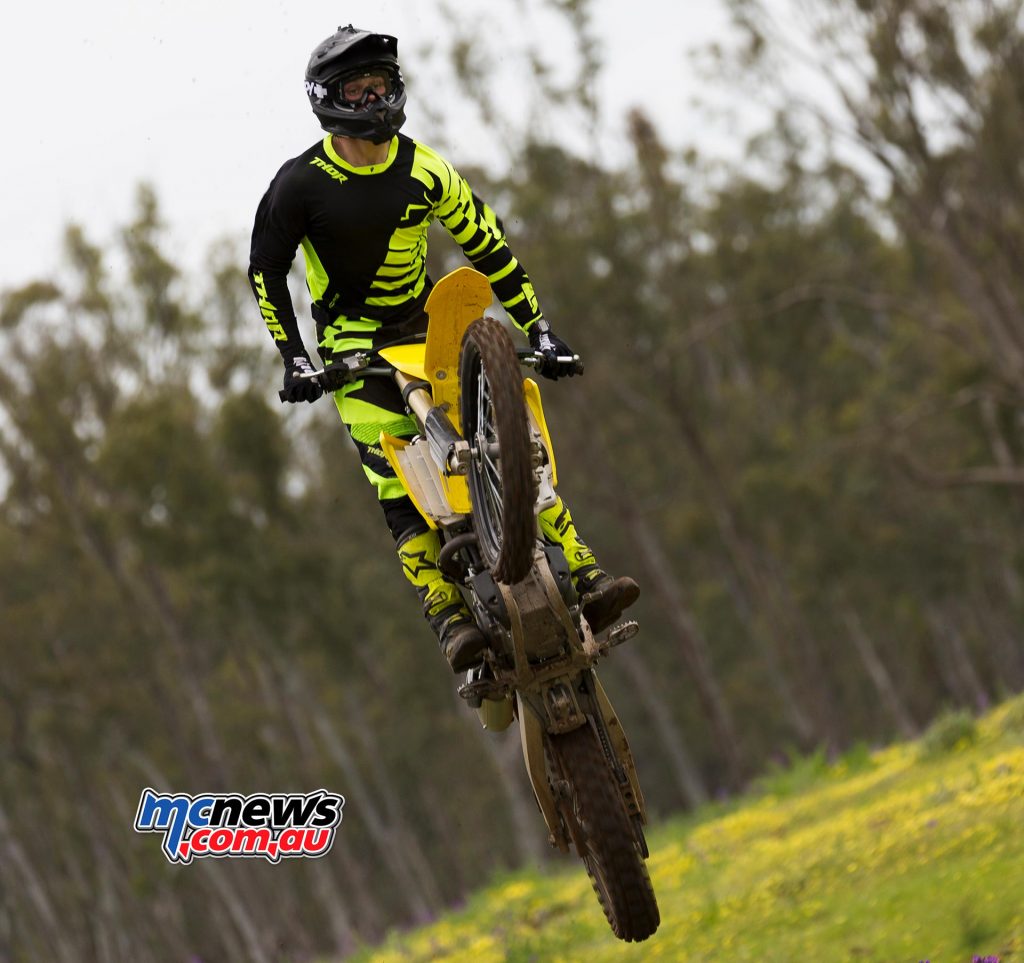
2017 Suzuki RM-Z250 Suspension
In terms of the suspension, Suzuki have continued their use of the KYB (previously known as Kayaba) Pneumatic Spring Fork (PSF2) and rear shock.
As commonly understood, the pneumatic (air) forks are lighter and have more adjustability than conventional spring forks, which are features that can be hugely beneficial in the right hands.
It doesn’t take much effort to adjust the shock or forks, however, in some cases due to the wide range of adjustability options and lack of knowledge around setting up air forks, general riders may struggle with creating a setting they’re comfortable with.
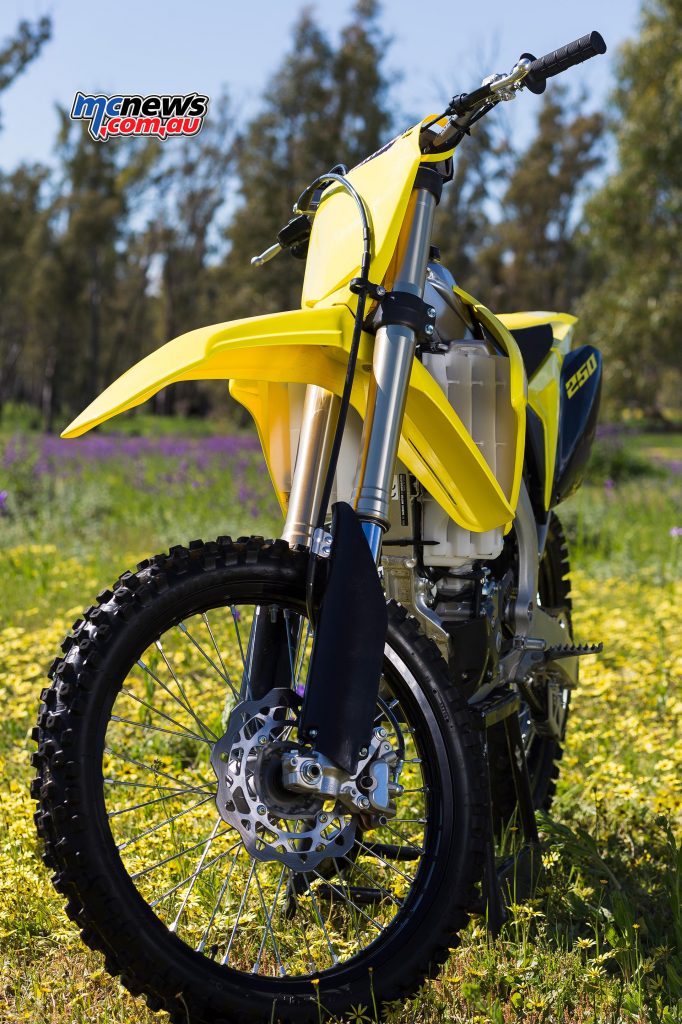
This has led to many privateer racers across numerous brands replacing their air forks with spring forks to try to find a setting they’re comfortable with.
My response to this is to read the manual that comes with the RM-Z250 to find a general base setting that suits your weight, then make small refinements depending on your ability, track type and terrain surface.
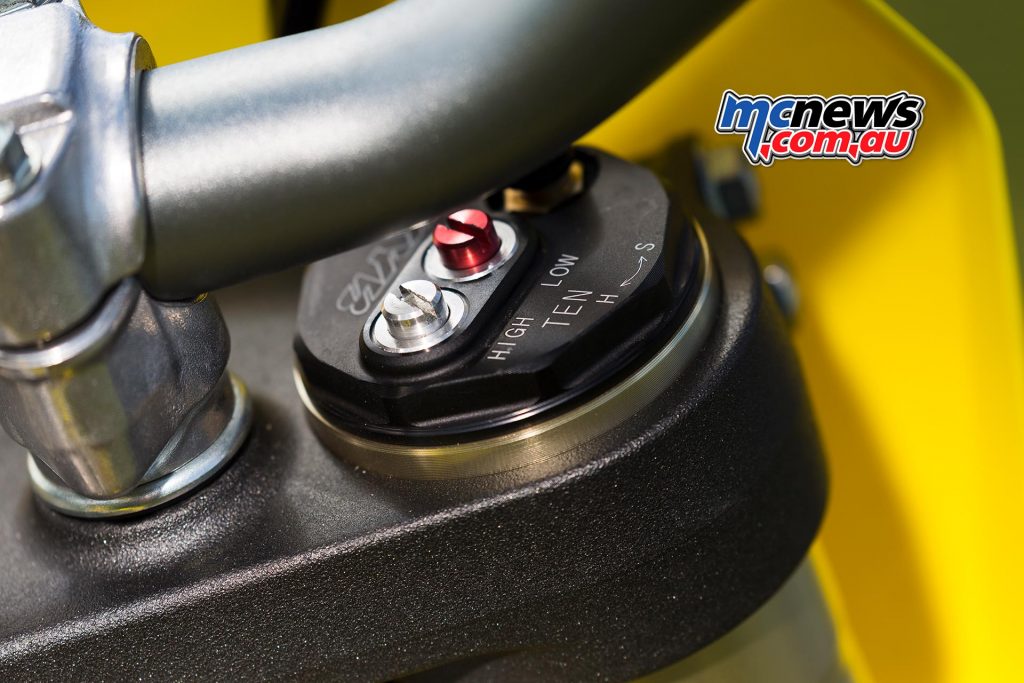
This can be done personally, or with the professional service of a suspension specialist, which is more advisable for those racing or wanting a truly personalised motorcycle.
My first ride of the RM-Z250 was on a whooped-out sand track with no overly large jumps. For a guy weighing in at 76kg (without gear) I found the standard PSF2 fork and rear shock settings to be perfectly fine for me and I didn’t need to make any adjustments to the clickers, air pressure or spring preload on that day.
The bike handled really well in standard trim and as mentioned previously, didn’t throw up any unwelcomed surprises when I was trying to push the bike a little harder.
My second ride of the RM-Z was at a fast, open circuit with big ruts and sizeable jumps, which meant I was able to put the suspension through its paces a little more.
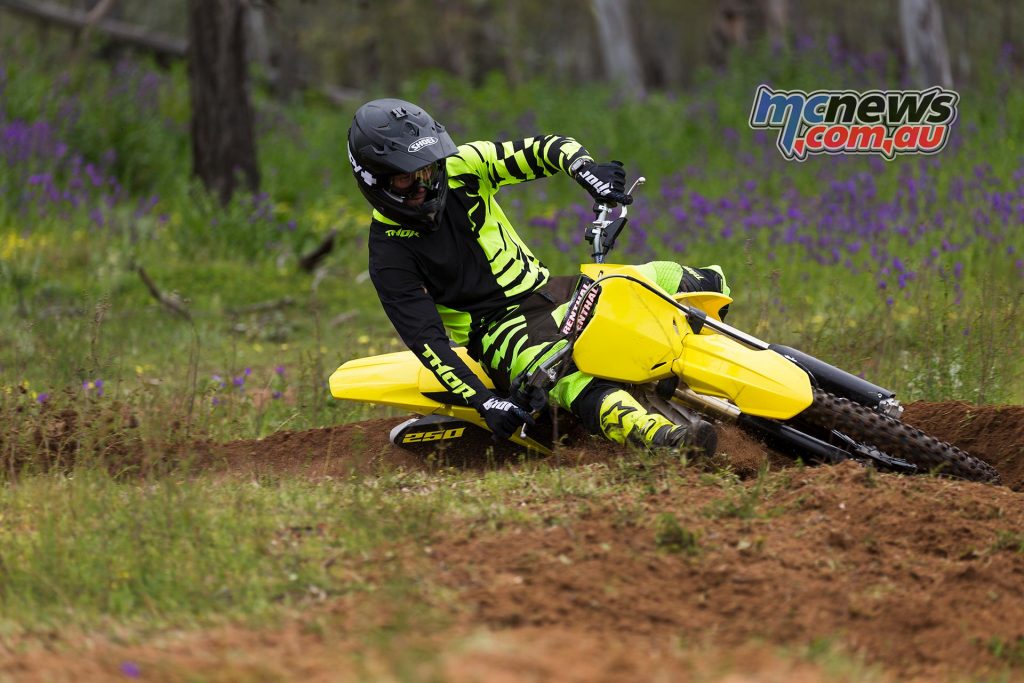
I found at the faster track once I had run through at least 30 minutes on the standard setting I needed to stiffen the forks by 1.5PSI as I was beginning to push all the way through the stroke and bottoming out when landing and hard under brakes.
This small change was exactly what I needed and meant I was then only using around four-fifths of the fork stroke, which as a rider I generally prefer.
Once I was confident with the air pressure setting (that I estimated by reading the manual) I made some small fork compression adjustments using the clickers, and found that two clicks stiffer was where I was most comfortable with the handling of the RM-Z.
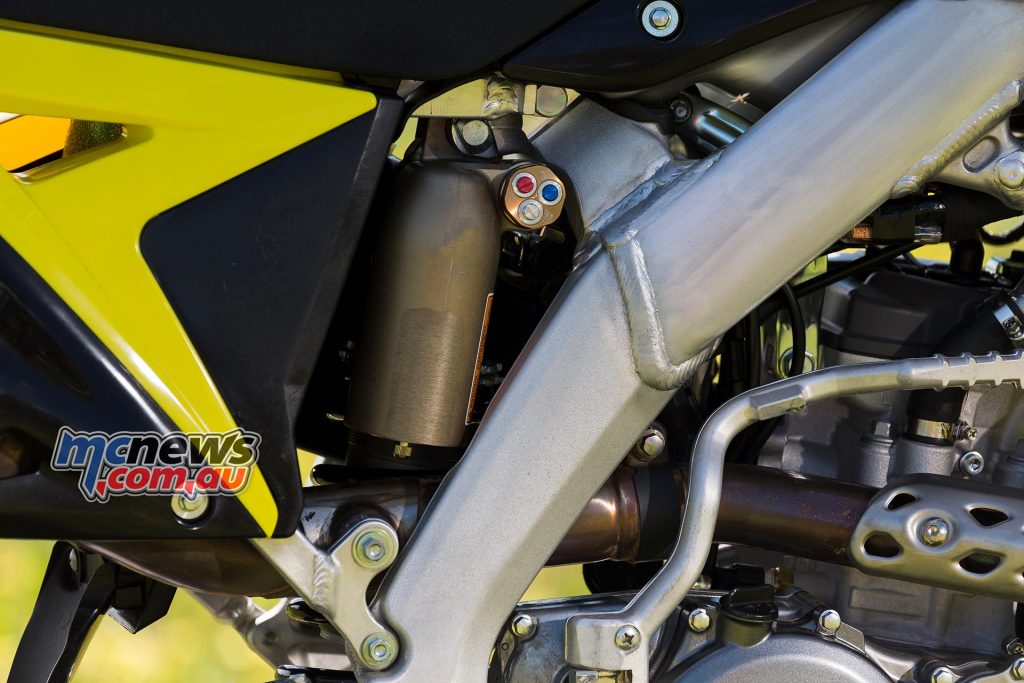
To Suzuki’s credit, throughout this whole process I didn’t make any changes to the shock via the integral adjuster system, as I was content with how the rear-end handled and tracked under sandy, wet and rutty, and dry, hard-packed conditions.
If, however you need to make any adjustments to the KYB rear shock, the compression and damping can be altered via the clickers on the shock canister, while the spring preload can be tuned via the threaded collar on the main shock body, which are both very simple processes to undertake.
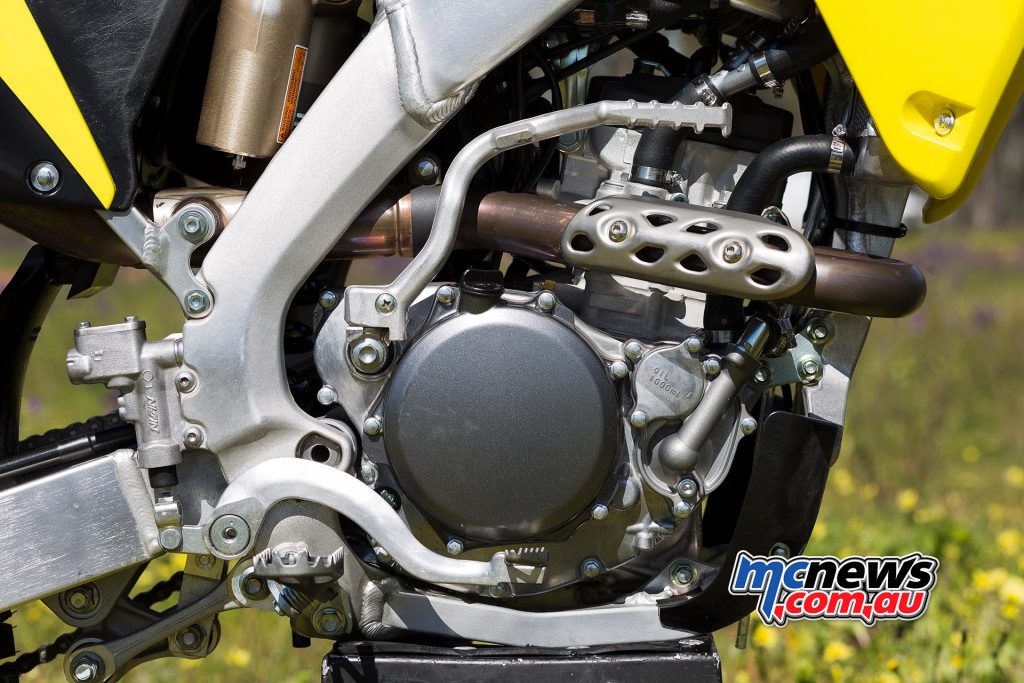
2017 Suzuki RM-Z250 Engine
The power plant for the quarter litre RM-Z remains relatively unchanged for 2017, with major features including the Suzuki Holeshot Assist Control (S-HAC) system, rich and lean fuel couplers, 44mm throttle body with progressive throttle linkage, diamond like carbon (DLC) coated piston pin, and shot peening surface treatment for the piston.
The 250 engine comes standard hosting a 13.75:1 compression ratio and L-shaped shaped piston ring, which increases seal performance and decreases blow-by gas.
The RM-Z250’s engine output feels very similar to the big brother 450, with a smooth, progressive power curve that doesn’t want to rip your arms off.
The main difference obviously is that small bore bike has a lot less horse power and torque, so it isn’t as easy to run a higher gear and expect the bike to pull you out of turns.
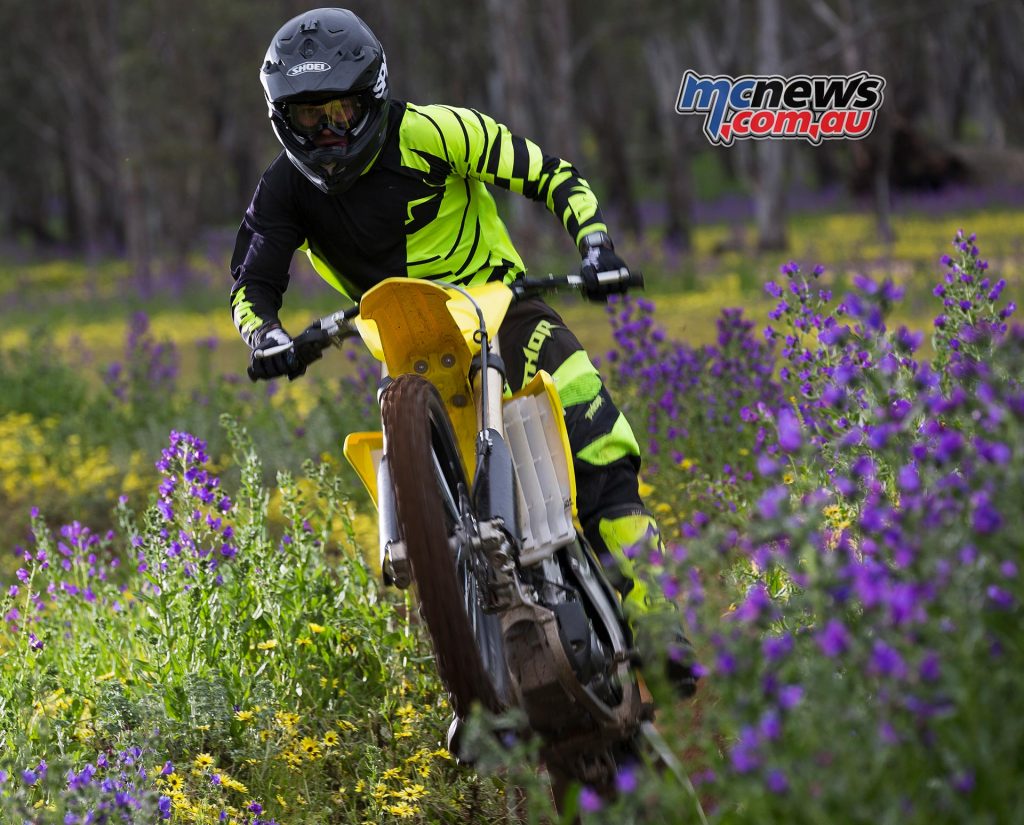
Due to this, on the 250 I was having to either select a lower gear, or feather the clutch in a higher gear to keep the bike riding in the upper rev range, which is where the RM-Z seemed to be strongest in its power delivery.
As a rider, I rather run a higher gear and use the engine’s torque to pull me through turns rather than riding high in the rev range, so I tested the rich and lean fuel couplers as well as the standard setting to see which ECU option I preferred.
I felt that the rich setting suited my riding style best and aided me most in exiting turns in a higher gear, but again the use of these couplers is completely dependent on riding style and track conditions.
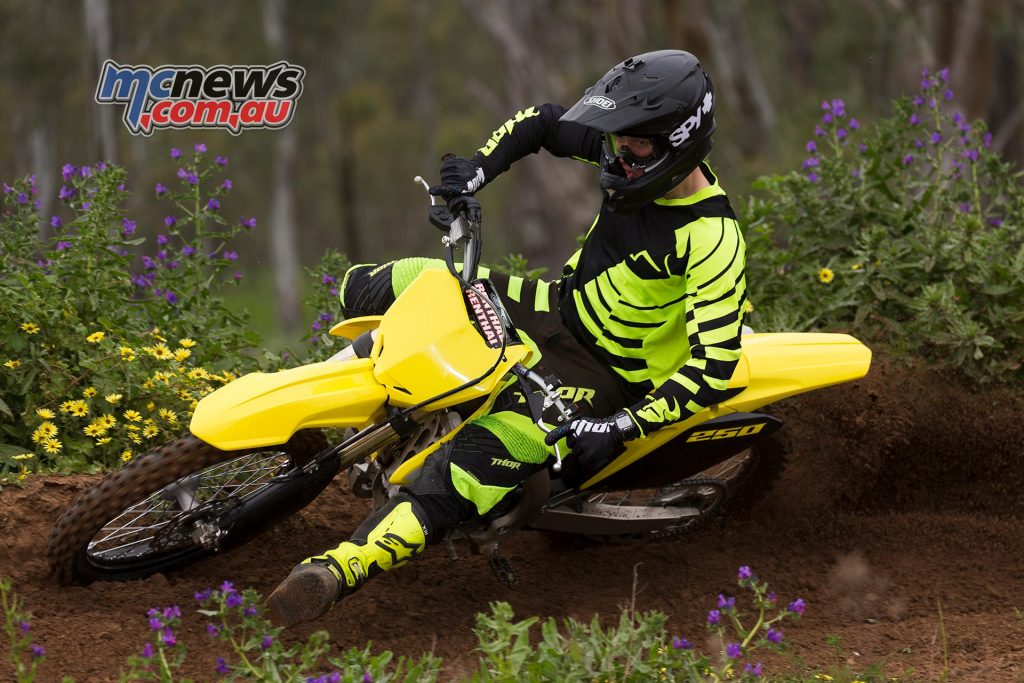
The final, and arguably most stand out feature for the RM-Z250 engine package, is that of the Suzuki Holeshot Assist Control (S-HAC) system. The S-HAC system is equipped with three modes – A, B and Standard, which can be selected at a rider’s discretion to suit the starting surface they are faced with.
In a nutshell, the S-HAC system A Mode is best suited for hard, slippery conditions such as concrete starts, as it retards the ignition timing on initial launch and movement over the gate to minimise wheel spin, before then advancing the ignition timing for stronger acceleration down the straight.
B Mode is tailored to conditions of higher traction like grippy dirt starts, as it advances the ignition timing to increase the throttle response and acceleration straight out of the gate.
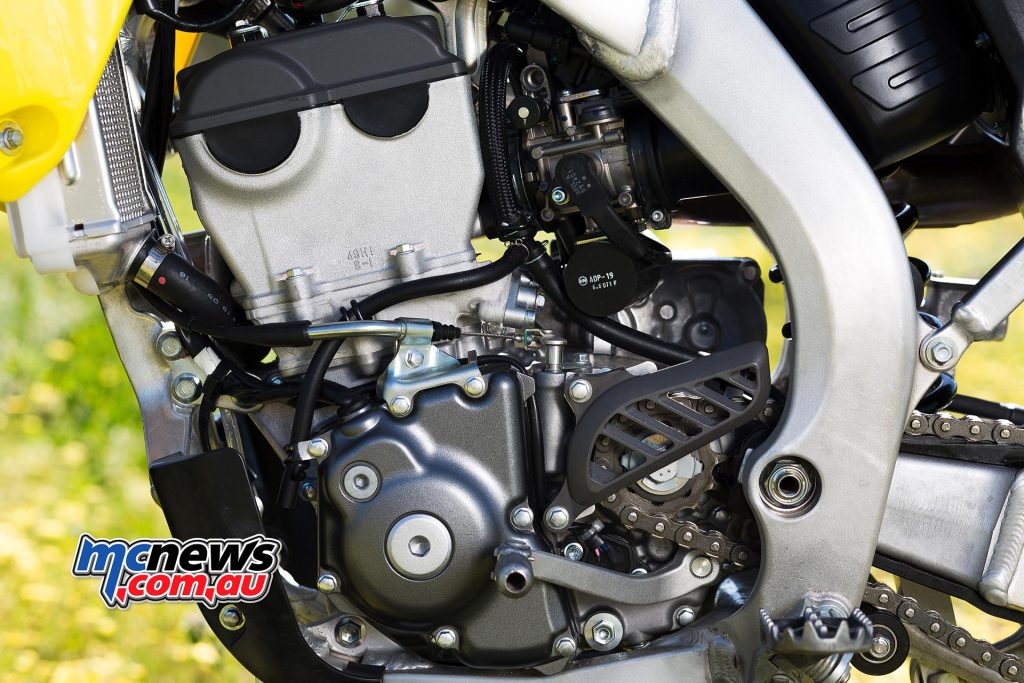
Standard Mode features no changes to the ignition timing, and is what the bike returns to following either six seconds post start, when shifted into fourth gear, or when the throttle closes off (whichever occurs first).
I tried all three S-HAC options at both tracks and preferred the B Mode on every occasion as it seemed to provide the most responsive power out of the gate, which like a torquey engine is what I prefer.
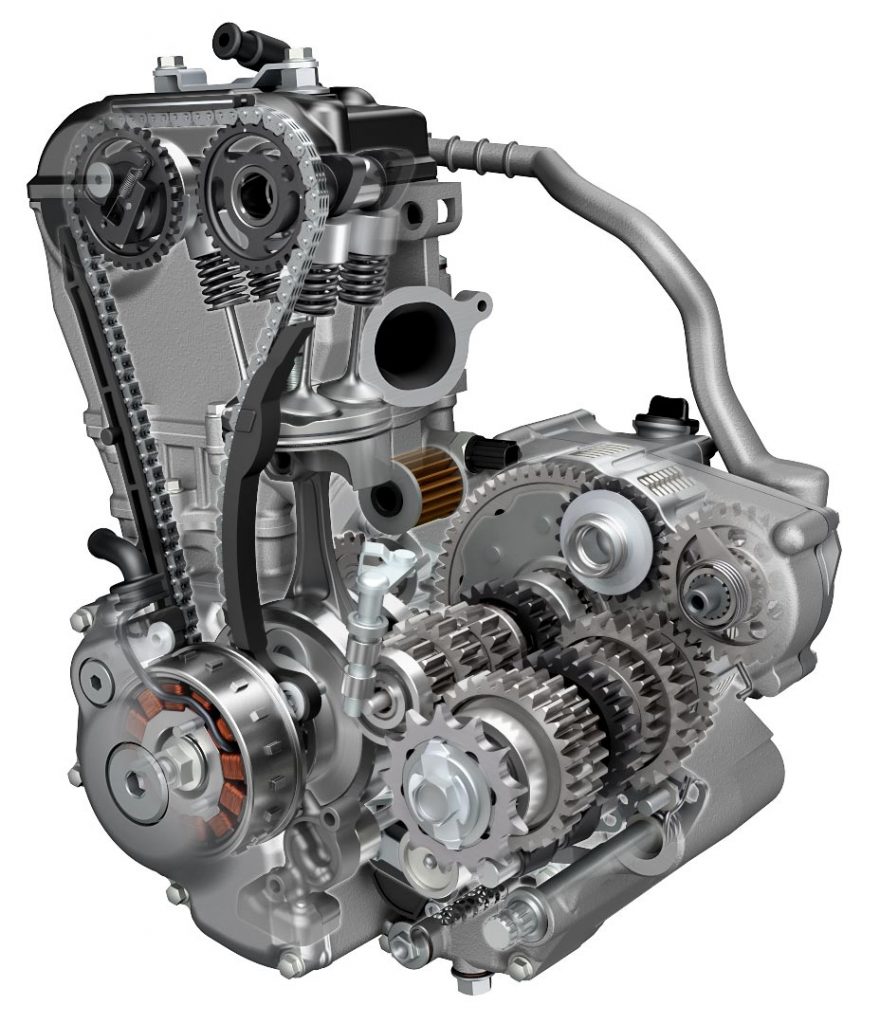
2017 Suzuki RM-Z250 Transmission and Braking
For 2017, Suzuki have continued their use of a five-speed constant mesh transmission, and have been able to improve the gear selection feel and accuracy via refining the shift cam and shift lever.
The transmission on the RM-Z250 was faultless, with a comfortable shift feel and no gearing issues to report in our time on the bike.
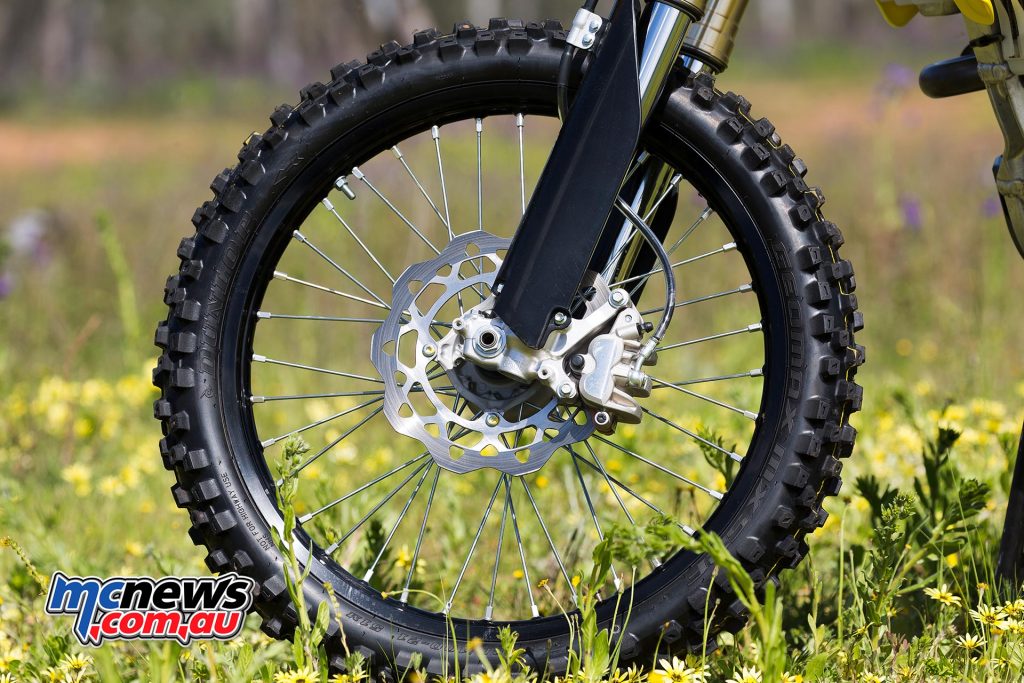
In terms of the Suzuki’s stopping power, like it’s big bore brother, the RM-Z250 still features 250mm front and 240mm rear wave disc rotors.
As mentioned in our RM-Z450 review, upsizing of the braking discs as standard would have been a welcomed addition to the motocross machines as this would save consumers needing to buy after-market rotors.
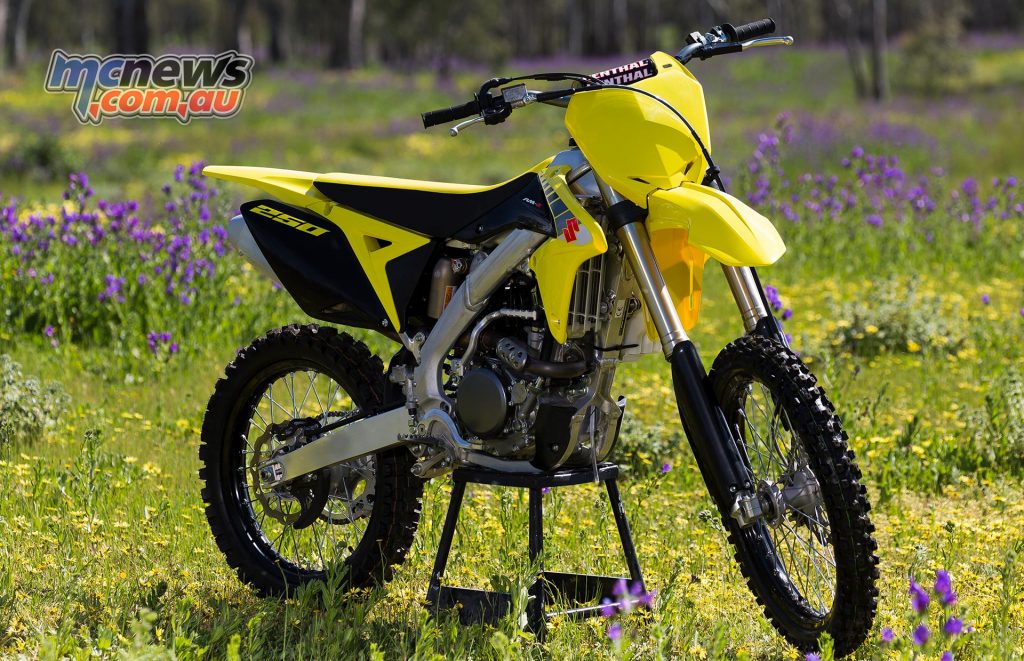
2017 Suzuki RM-Z250 Price
The regular retail price (RRP) for the 2017 Suzuki RM-Z250 is set at $9,990 and will be available at Suzuki Motorcycle dealers.
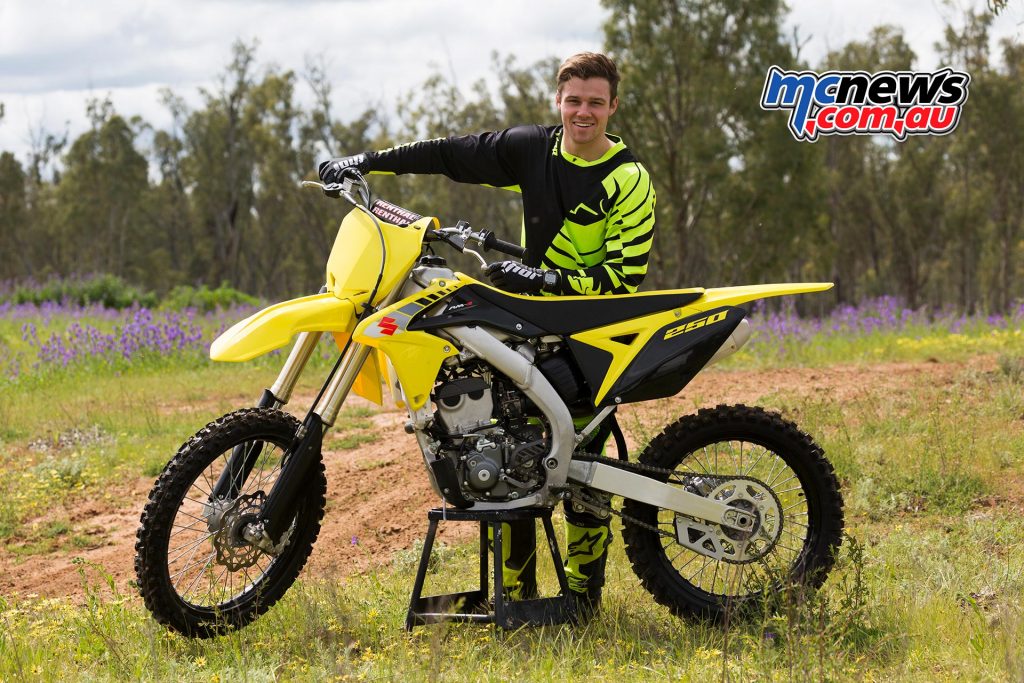
Final thoughts
Although remaining relatively unchanged for 2017, I feel Suzuki are still providing a very strong and competitive RM-Z250 motocross machine at a competitive price point that ticks most boxes across the board and would suit any rider from beginner through to pro. Oh, and I’m looking forward to seeing what Suzuki have in store for 2018!
2017 Suzuki RM-Z250 Specifications
- Engine – 249cc, single cylinder, 4-Stroke, Liquid Cooled, DOHC, 13.75:1 compression ratio, S-HAC, 44mm throttle-body,
- Transmission – Five-speed, constant mesh
- Front suspension – KYB PSF2 air fork, fully adjustable
- Rear suspension – KYB rear shock, fully adjustable
- Front brake – Nissin twin-piston caliper, 250mm wave disc
- Rear brake – Nissin single-piston caliper, 240mm wave disc
- Wheels – Black Excel aluminium rims with stainless steel spokes
- Fuel capacity – 6.5L
- Seat height – 955mm
- Wheelbase – 1475mm
- Length – 2170mm
- Width – 830mm
- Height – 1270mm
- Wet weight – 106kg























